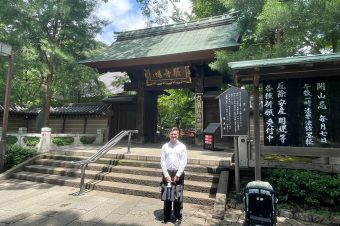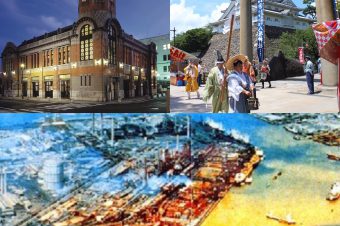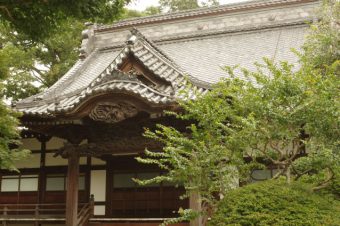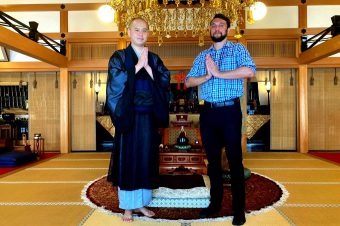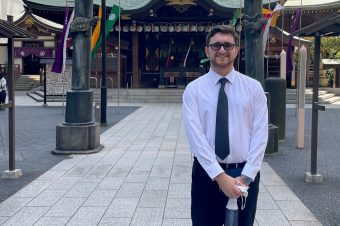Jyouchiji, in Kita Kamakura, is one of my favorite temples. It is a nice retreat from the tourist hustle and bustle. Even the air is a little different there.
Jyouchiji is #4 of the five most important Zen temples in Kamakura. Today it is a compact compound with few structures, but it used to be much bigger, with extensive grounds and many buildings. Most of the grounds and buildings went away during Edo period. Probably more went away as a result of the Shinto/Buddhism split mandated by the Meiji government. The Great Kanto Earthquake of 1923 also took a huge toll on Jyouchiji.
I had a pleasant talk with Abbot Eon Asahina, whom I have known since we both appeared in a TV quiz program several years ago. He really is quite friendly and easy going. (The article’s title is just a teaser, referring to the fact he offers Zen meditation lessons to visiting U.S. Marines.)
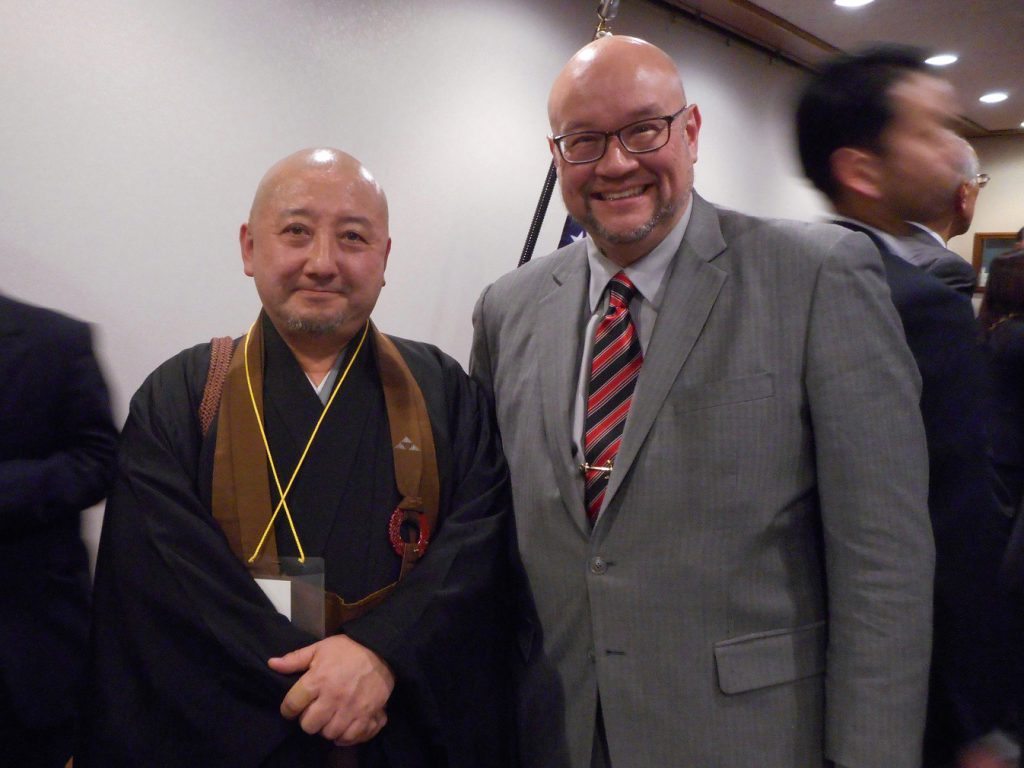 Abbot Eon Asahina
Abbot Eon Asahina
According to Abbot Asahina, Jyouchi traces its roots back to China. During the Kamakura Shogunate period (1192-1333), many Japanese people really wanted to learn about Zen Buddhism, so priests were invited from China to become abbots at Japanese temples. Such was the fame of Jyouchiji during the Kamakura Period, even without the help of the Internet people all over Japan heard about a famous Zen sage resident at Jyouchiji, and traveled to Kamakura to learn from him. There were lots of Chinese people living in the vicinity of the temple back then, including the carpenters and artisans who worked on the temple buildings. Jyouchiji’s combination gate and bell tower (shouroumon), with its distinctive appearance, evokes those Chinese roots. The current gate is a recent reconstruction, completed about ten years ago. The previous gate was built shortly after the Great Kanto Earthquake, when building materials were in short supply, and needed to be rebuilt.
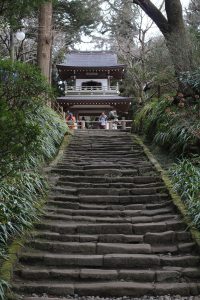 shouroumon
shouroumon
Within Jyouchiji’s main pagoda are three Buddha statues representing the past, present, and future. While the presence of three statues is not that uncommon, Jyouchiji is different in that all three are treated equally. This is a bit confusing, so please stay with me here. Usually the middle (present) statue represents Oshaka-sama (Buddha), and the flanking statues are of inferior rank and therefore referred to as Bosatsu (bodhisattva – one who has reached enlightenment but vows to save all beings before becoming a buddha). At Jyouchiji, all three are referred to as Nyorai (buddha – Tathagata, or “perfected one”). So here we have Amida Nyorai (past), Shaka Nyorai (present) and Miroku Nyorai (future). One might ask, how can Miroku (Maitreya) be represented as a full Buddha when the deity is actually a Bosatsu (bodhisattva) who will appear on Earth in the distant future, achieve complete enlightenment and then teach the pure dharma? Quite simple, really. The statue at Jyouchiji represents the figure of Miroku 5,670.000,000 years from now, after the deity has attained full enlightenment and is therefore a full-fledged Nyorai (buddha).
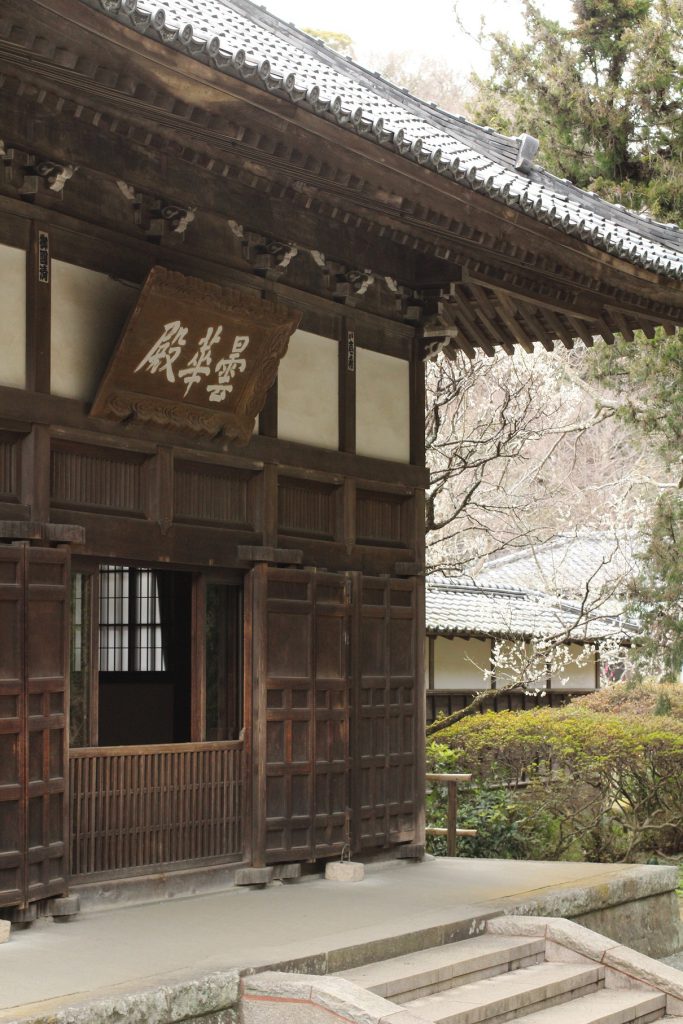 Main Pagoda
Main Pagoda
On a more earthly level, the Jyouchi grounds and buildings are designed to present the ambience of a satoyama, in other words making one feel like he/she has returned to an idealistic rural hometown. This representation is achieved with a thatched roof drawing room and teahouse, combined with a garden which is deliberately maintained to look like it is completely left to Nature, instead of the more common well-manicured garden one normally associates with temples.
I asked about the thatched roof, knowing they are pretty maintenance intensive. Abbot Asahina told me the roofs must be refreshed every 20 years or so. Normally only the top layer is replaced, as the lower layers are sheltered from the elements. Even so, the lower layers are carefully inspected during the process, and replaced if necessary. Craftsmen were called in from Sendai to do the work, as unless the thatch is properly cut, stacked, and compressed, the roofs don’t last too long.
 Garden
Garden
you’ll find yourself at another famous feature of Jyouchiji, the statue of Hotei-san. A jolly old man with a bald head and rounded belly (kind of reminds me of me), Hotei-san is one of Japan’s Seven Gods of Good Fortune, and is the God of Happiness.
One can garner good luck by rubbing his belly, so you’ll notice his stomach is rather shiny. One feature of this particular Hotei-san is his pointing finger. This is Hotei-san telling you, “that which you seek is right next to you.” This is also interpreted as pointing to the future, therefore there is a legend this particular variant of Hotei-san is actually an incarnation of Miroku Nyorai, above.
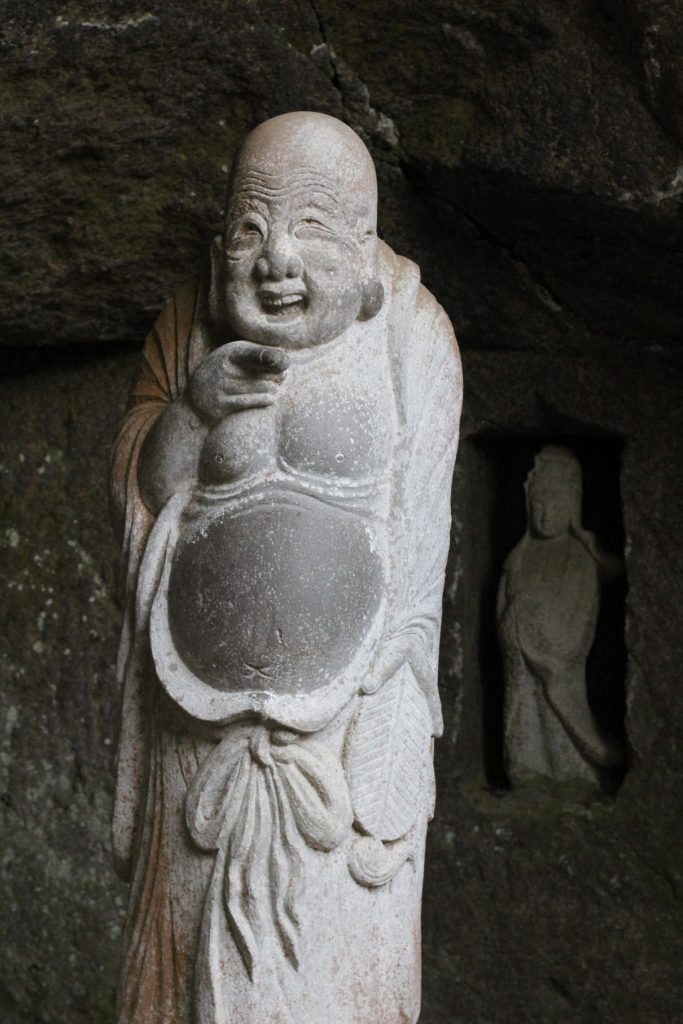 Hotei-san
Hotei-san
Jyouchiji also has the Kanro-no-ido, or Nectar Well. It is not potable water by today’s regulatory standards, but still considered very pure and special. People can still be seen filling bottles with this spring water to take home.
Shortly after Ambassador Caroline Kennedy (one of my favorite people!) announced she will not be staying on as Ambassador to Japan for the Trump Administration, she made a no-notice visit to Jyouchiji. No entourage other than her SP (Japan Security Police) escort. Apparently, she had specifically selected Jyouchiji in advance to visit, so perhaps she had heard it was a special place as well.

